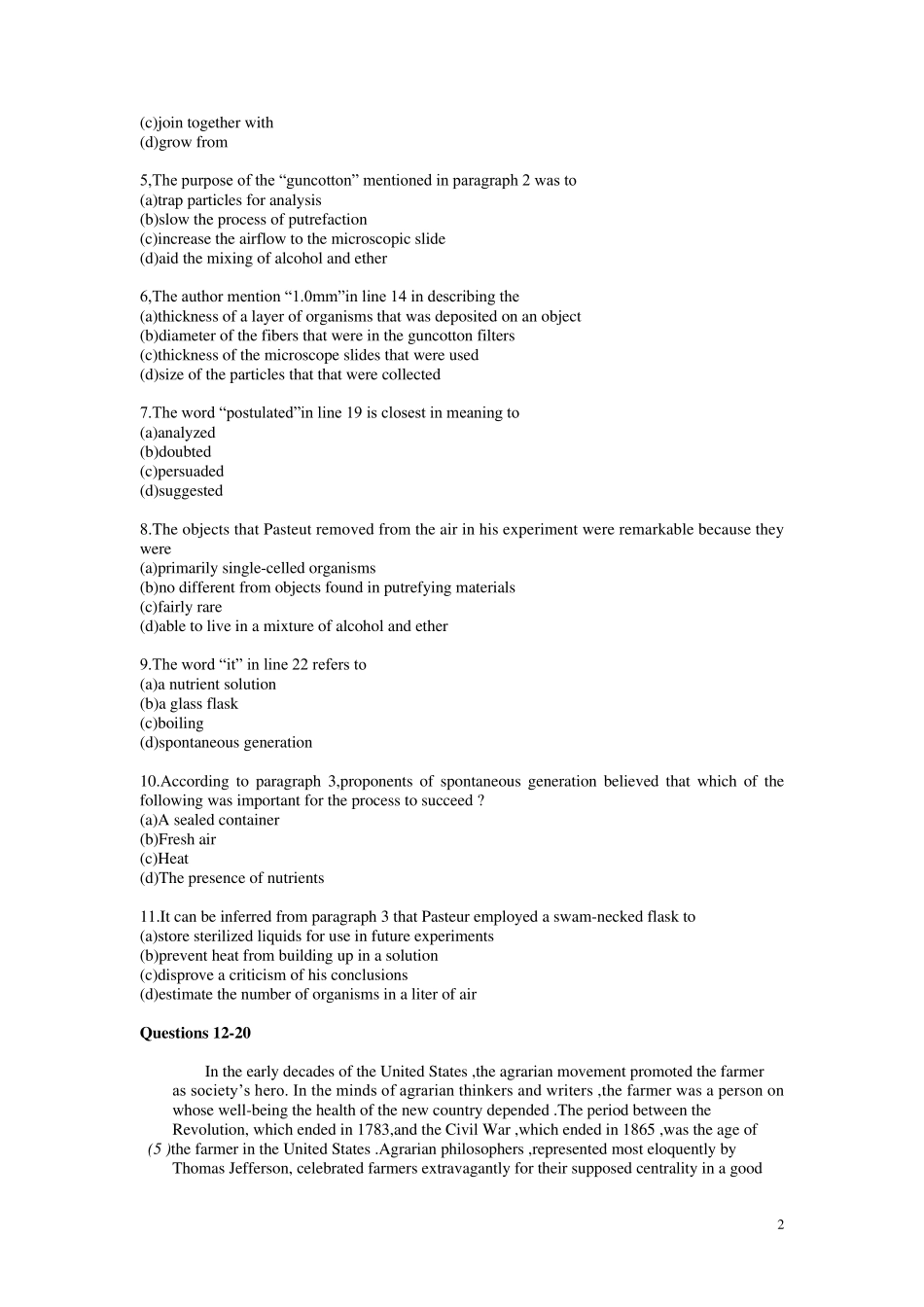1 0308 托福试题 阅读(55minu tes) Qu estion 1-11 If food is allowed to stand for some time, it putrefies .When the putrefied material is examined microscopically ,it is found to be teeming with bacteria. Where do these bacteria come from , since they are not seen in fresh food? Even until the mid-nineteenth century, many people believed that such microorganisms originated by spontaneous (5 ) generation ,a hypothetical process by which living organisms develop from nonliving matter. The most powerful opponent of the theory of spontaneous generation was the French chemist and microbiologist Louis Pasteur(1822-1895).Pasteur showed that structures present in air closely resemble the microorganisms seen in putrefying materials .He did (1 0 ) this by passing air through guncotton filters, the fibers of which stop solid particles. After the guncotton was dissolved in a mixture of alcohol and ether, the particles that it had trapped fell to the bottom of the liquid and were examined on a microscope slide .Pasteur found that in ordinary air these exists a variety of solid structures ranging in size from 0.01 mm to more than 1.0 mm .Many of these bodies resembled the reproductive (1 5 )structures of common molds, single-celled animals, and various other microbial cells . As many as 20 to 30 of them were found in fifteen liters of ordinary air ,and they could not be distinguished from the organisms found in much larger numbers in putrefying materials .Pasteur concluded that the organisms found in putrefying materials originated from the organized bodies present in the air .He postulated that these bodies are constantly (2 0 )being deposited on all objects. Pasteur showed that if a nutrient solution wa...


